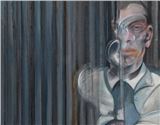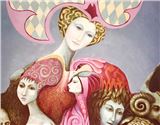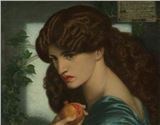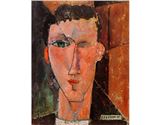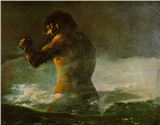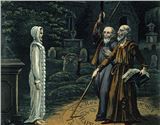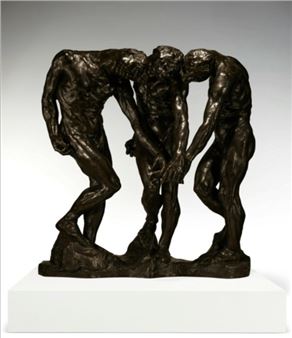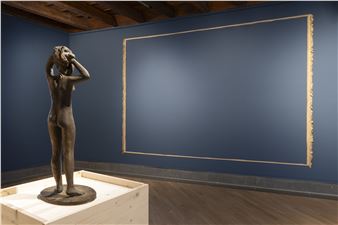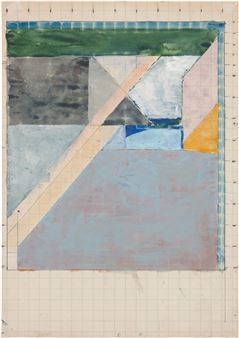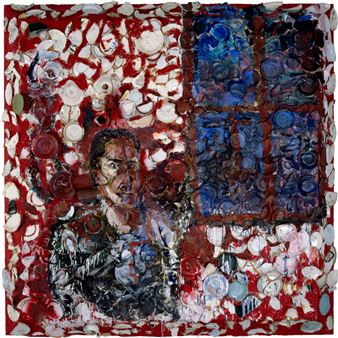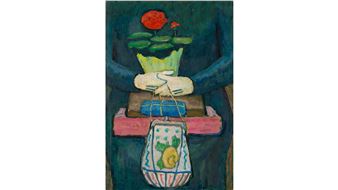Selections from the Department of Drawings and Prints: Life at Court
In conjunction with the exhibition Visitors to Versailles (1682–1789), this installation will explore various aspects of life at court through works on paper from the Department of Drawings and Prints. The French château at Versailles was but one among a great multitude of princely, stately, royal, and papal courts in the early modern period. While each was influenced by local traditions and the personal idiosyncrasies of its ruler, they also had many common features and customs, which will be examined in this installation through thematic selections of drawings, prints, and illustrated books.
Representations and designs for palaces, from Frederiksborg Castle in Denmark to the Villa Estense in Tivoli, show how the power of a court is reflected in imposing architecture, lavish interiors, and intricately planned gardens. The various forms of entertainment organized for rulers and courtiers are highlighted in works such as Louis Jean Desprez's imposing scenographic design for the opera Electra, and Stradanus's tapestry designs with hunting parties. Prints by Romeyn de Hooghe, Goya, and other artists illustrate how official portraits not only conveyed the likeness of the sovereign, but also communicated ideas about their reign, dynasty, triumphs, and aspirations. The depiction of rulers in military garb, such as the Medici Duke Cosimo I in full armor, or even leading armies into battle, as in François Vincent's portrayal of Napoleon's invasion of Egypt, added an another dimension to dynastic portraiture, emphasizing their strength and bravery in protecting the territory and citizens they ruled over.

Recommended for you
In conjunction with the exhibition Visitors to Versailles (1682–1789), this installation will explore various aspects of life at court through works on paper from the Department of Drawings and Prints. The French château at Versailles was but one among a great multitude of princely, stately, royal, and papal courts in the early modern period. While each was influenced by local traditions and the personal idiosyncrasies of its ruler, they also had many common features and customs, which will be examined in this installation through thematic selections of drawings, prints, and illustrated books.
Representations and designs for palaces, from Frederiksborg Castle in Denmark to the Villa Estense in Tivoli, show how the power of a court is reflected in imposing architecture, lavish interiors, and intricately planned gardens. The various forms of entertainment organized for rulers and courtiers are highlighted in works such as Louis Jean Desprez's imposing scenographic design for the opera Electra, and Stradanus's tapestry designs with hunting parties. Prints by Romeyn de Hooghe, Goya, and other artists illustrate how official portraits not only conveyed the likeness of the sovereign, but also communicated ideas about their reign, dynasty, triumphs, and aspirations. The depiction of rulers in military garb, such as the Medici Duke Cosimo I in full armor, or even leading armies into battle, as in François Vincent's portrayal of Napoleon's invasion of Egypt, added an another dimension to dynastic portraiture, emphasizing their strength and bravery in protecting the territory and citizens they ruled over.
Artists on show
- Adam Frans van der Meulen
- Adam Perelle
- Aegidius Sadeler II
- Antonio Basoli
- Augustin de Saint-Aubin
- Charles de la Fosse
- Charles François de la Traverse
- Charles Parrocel
- Cornelis Massys
- Daniel Marot the Elder
- Donato Giuseppe Frisoni
- Etienne Dupérac
- Eugène Emmanuel Viollet-le-Duc
- Fedele Fischetti
- Ferdinando Galli Bibiena
- Francisco José de Goya y Lucientes
- François André Vincent
- François Boucher
- Gabriel-Francois Doyen
- Giacomo Quarenghi
- Giovanni Battista Piranesi
- Giovanni Volpato
- Heinrich J. Schütz
- Henri Eugène Augustin le Sidaner
- Jakob Matthias Schmutzer
- Jean-Antoine Watteau
- Johan Christian Klausson Dahl
- Johann Elias Ridinger
- Johann Wolfgang Baumgartner
- John Ruskin
- Jørgen Roed
- Louis Jean Desprez
- Lucas Cranach the Elder
- Mario Cartaro
- Martin Engelbrecht
- Michel-Francois Dandré-Bardon
- Nicolò della Casa
- Ogden Codman, Jr.
- Pieter van Sompel
- Romeyn de Hooghe
- Salomon de Caus
- Salomon Kleiner
- Stefano della Bella
- Wenceslaus Hollar
- Wybrand Hendriks
Contact details


 ARTISTS
ARTISTS
